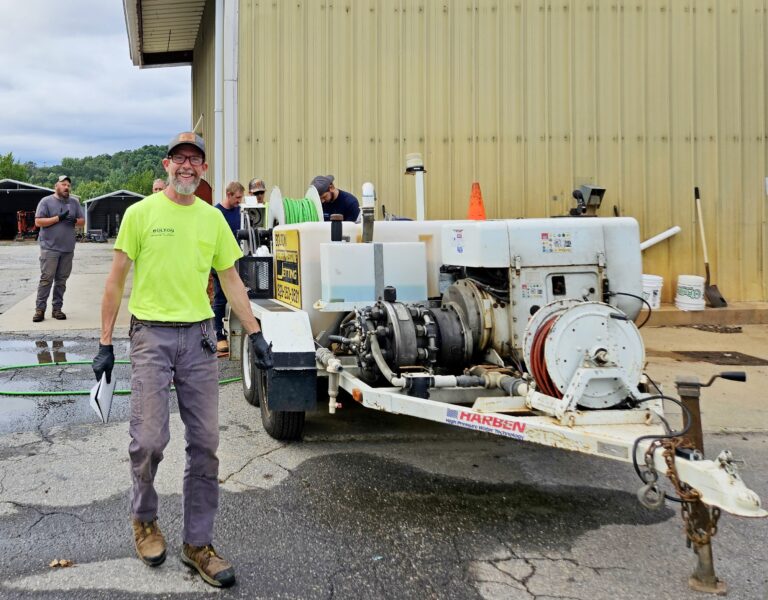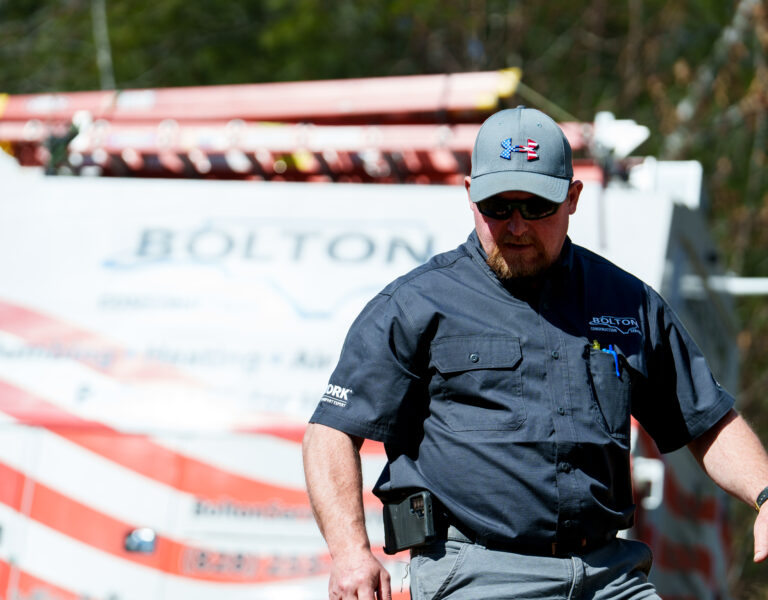Tis the season of fallen leaves, dropping temperatures, and the mad rush to put up Christmas lights before the snow falls. While you’re shaking out the strings of tangled twinkle lights, consider these Christmas lighting tips from a Master Electrician on how to safely deck your halls, roofs and trees for the holiday.
How Many Strings of Christmas Lights Can I Connect?
To understand how many Christmas lights you can safely connect end-to-end, you must first determine the number of watts you can put on a circuit.
A standard wall outlet is 120 volts and is wired to a circuit breaker or fuse, usually 15 or 20 amps. Your goal is to not overload the circuit breaker/fuse or the wire it’s connected to. Never put more than 80% load on your breakers/fuses, which is 16 amps.
The good news is that the box of lights will usually list the amps, and indicate the maximum number of strings that can be connected together. The below chart is only general guidance, always follow the manufacturer’s instructions!
Here are the estimated watts for different Christmas lights, but best to check the package:
Type of lights Bulbs per set Set Wattage
Incandescent Mini Lights 100 40.8 watts
Incandescent C9 Stringer Set 25 175 watts
LED Mini Lights 50 3.45 watts
LED Mini Lights 70 4.83 watts
So if you are using C9 Stringer Sets, you could connect (1440/175) = 8.2, or 8 strings. LED lights use significantly less wattage. Unlike incandescent bulbs which have filaments in each bulb causing them to get hot. LEDs use a path of electrons and always stay cool. It’s best to use LED lights when connecting many strings together.
Most circuits are also shared with a room in the home. Be sure to account for things like appliances when determining how many strings you can plug in. If in doubt, use the “Rule of 3” – 3 strings can be plugged in end-to-end.
Other Helpful Tips
USE THE RIGHT EXTENSION CORDS:
Be sure to use the outdoor extension cords when hanging Christmas lights outside, as indoor extension cords are not heavy duty enough. Also avoid having cords in high traffic areas, such as under the welcome mat. Also be sure not to plug in a massive bulk of cord connectors to the outlet, as the weight may draw the plugs away from the outlet and expose the contact terminals, which is a possible fire hazard.
INSPECT AND TEST BEFORE HANGING:
It’s best to plug in the lights prior to hanging them up to ensure they light up. Also, closely inspect each string for damaged or frayed wires, which could cause fires. Throw away any strings that look worn.
SET A TIMER:
To save on your electrical bill, and to be safe, always unplug the lights when you leave the house or turn in for the night. You can use a timer set to turn on/off your lights at specific times.
WHEN TO CALL AN ELECTRICIAN:
If you plan on decorating your house Griswold-style, we recommend running separate ground fault circuit interrupter (GFCI) outlets. These are special electrical outlets that are installed in areas where there is a risk of electricity meeting water like in outdoor outlets and in kitchens and bathrooms. GFCI outlets have the “test” and “reset” buttons on the front, and monitor the flow of an electrical current. So when a fault happens, the GFCI breaks the electrical circuit and shuts off the flow of energy. Preventing electric shock, fires and damage to things plugged in (such as appliances).
Be sure to call a licensed electrician to install the GFCI outlet to ensure it’s done correctly. Installing separate GFCI outlets will give you peace of mind that you aren’t exceeding the amp limits and risking a fire.
Bolton Construction and Service of WNC, Inc. is dedicated to providing high quality electrical services. We look forward to helping you with your next project!













